Explore this guide on how to wash yarn blankets because preserving the softness and vibrant colors of your handcrafted pieces requires careful handling and special cleaning techniques.
Caring for yarn blankets requires a specific approach to maintain their quality and longevity.
This article provides a comprehensive guide on how to wash yarn blankets properly, whether they’re made from wool, cotton, or synthetic fibers.
It covers everything from preparation, washing, drying, and storage.
The information here is crucial for anyone looking to preserve the warmth and comfort of their yarn blankets for years to come.
Let’s delve into the details.
Key takeaways:
- Different yarn types require specific washing methods.
- Determine the yarn type before washing.
- Choose a gentle, pH-neutral soap for yarn blankets.
- Pre-treat stains and soak the blanket before washing.
- Manual washing and flat drying are recommended for yarn blankets.
Determining the Washability of Different Yarn Types

The type of yarn used in a blanket determines how it should be cared for, particularly when being washed. Wool yarn, for example, requires gentle, cool washing methods to prevent shrinking or felting. Some types, like superwash wool and acrylic, can typically withstand machine washing, although it’s always recommended to check the yarn label.
Cotton yarn, widely regarded for its durability, can usually withstand higher temperatures. However, blankets made of luxury fibers like cashmere or alpaca demand the utmost care, needing gentle hand washing.
Silk-blend yarns must be treated gently and washed cold to prevent harsh wear and tear, while synthetic fibers like nylon and polyester are typically more forgiving, tolerating machine washes at moderate temperatures.
Remember, the care instructions indicated by the yarn manufacturer on the product’s label carry valuable information. Always refer to these guidelines to keep your yarn blanket looking its best over time. The goal is to clean without causing damage to the fibers, ensuring the longevity and softness of your beloved blanket.
Identifying the Yarn Type If Unknown
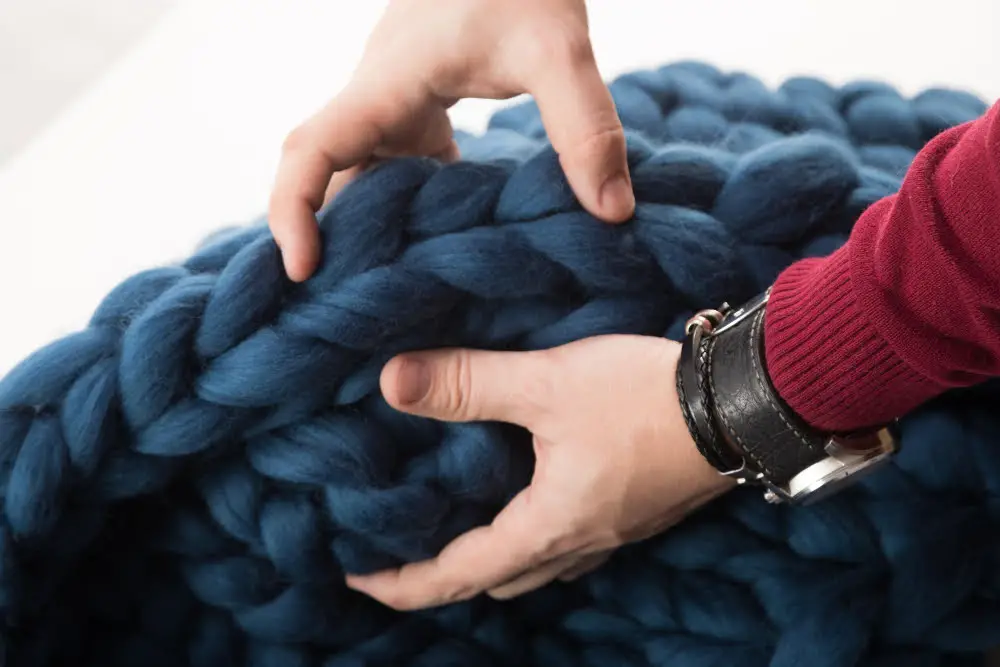
It’s possible to find yourself wondering about the type of yarn used in your blanket, especially if it’s a gift or a vintage item. There are three primary types: natural fibers, like wool and cotton; synthetic fibers, such as acrylic and polyester; and blends which combine both. Each kind has unique care requirements.
To determine your yarn type, start with a simple feel test. Natural fibers generally have a softer, warmer touch, while synthetics tend to feel slicker and cooler. You can also perform a burn test for a more accurate result. To do this, cut off a small piece, place it on a fireproof surface, and apply a flame. Synthetic fibers will melt while natural ones will smolder. Remember, safety is paramount: never leave burning yarn unattended!
Once the yarn type has been identified, you can proceed with the specific washing guidelines for that material.
Choosing the Right Soap for Washing Yarn Blankets

Selecting an appropriate soap is paramount when caring for your yarn blankets. Avoid strong detergents which can damage delicate fibers. Optimal options include gentle, pH-neutral soaps, especially those specifically designed for washing wool and delicate fabrics.
Remember, natural fibers such as wool, cotton, or silk can be adversely affected by harsh chemicals. Baby shampoos or mild laundry detergents can make a good alternative if specialised soap is unavailable.
On the contrary, synthetic yarns, including acrylic and polyester, can withstand a wider range of soap types. Though, ensure to avoid bleach and fabric softeners as these can break down the fibers over time and diminish the blanket’s longevity. Always test an inconspicuous area of your blanket first if unsure of the soap’s suitability.
Before lathering your blanket with soap, make sure to dissolve it thoroughly in water to prevent concentrated soap from adhering to specific areas, leading to inconsistent cleaning or risk of damage. Most of all, remember that less is often more when it comes to soap quantity: too much can leave a residue that’s hard to rinse out entirely.
Pre-treatment Steps Before Washing Yarn Blankets
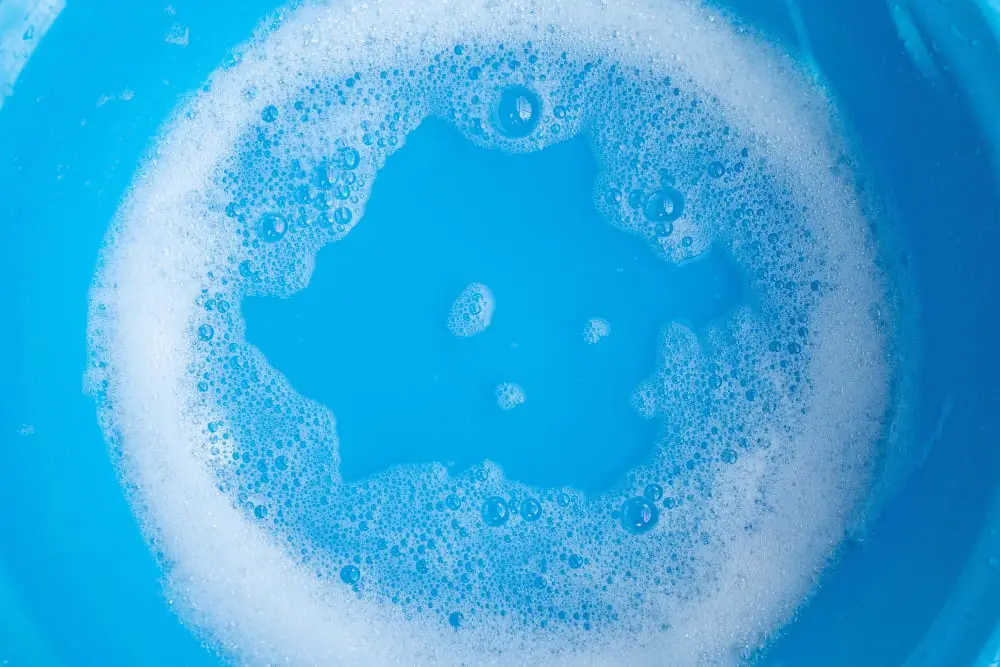
Having identified the type of yarn used in your blanket and chosen the right soap, you’re now ready to begin the pre-treatment process. Here are the key points to remember:
1. Check for Stains: Before anything else, meticulously check your blanket for any visible spots or stains. Deal with these areas first.
2. Spot Cleaning: Gentle dabbing with a small amount of soap on a cloth or sponge can help treat localized stains. Remember not to scrub too hard as this might damage the yarn.
3. Soaking: For deep-set dirt, consider a pre-wash soak. Fill a basin with cold water, add a small amount of soap, and let your blanket sit for 15-30 minutes.
4. Rinsing: After the soak, gently squeeze (don’t wring) the blanket to remove excess water. This is essential preparation for both hand and machine washing, and it minimizes the actual time the blanket spends in the washer, contributing to its longevity.
Each of these steps can enhance cleanliness while preserving the integrity and softness of the blanket’s yarn.
Manual Washing Techniques for Yarn Blankets
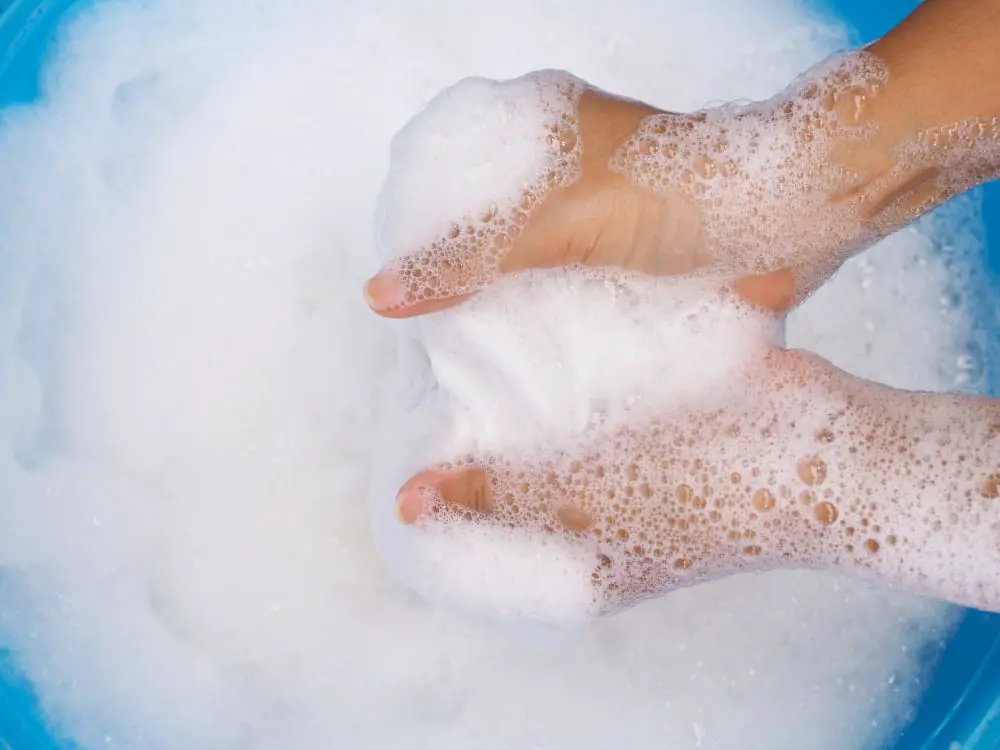
Begin by moistening your blanket in lukewarm water. Avoid hot water as it can lead to shrinking or warping. Next, add a mild soap, generally a few drops are sufficient. Swirl the water with your hand to create some bubbles.
Now gently submerge your yarn blanket into this soapy solution. Allow it to soak for 15 to 20 minutes. Remember, don’t agitate the blanket inside the water; this could cause felting.
Once soaked, gently squeeze the soapy water out of the blanket. Avoid twisting or wringing, as it can distort the yarn’s structure. Rinse it by dipping in a tub of clean lukewarm water. Repeat this rinse cycle until all soap residues have been removed.
Finally, remove excess water from the blanket by placing it on a clean, dry towel. Roll the towel up with the blanket inside and apply gentle pressure. Your blanket is now ready for drying, following the instructions outlined in the ‘Proper Drying Methods for Yarn Blankets After Washing’ section.
Machine Washing Instructions for Yarn Blankets
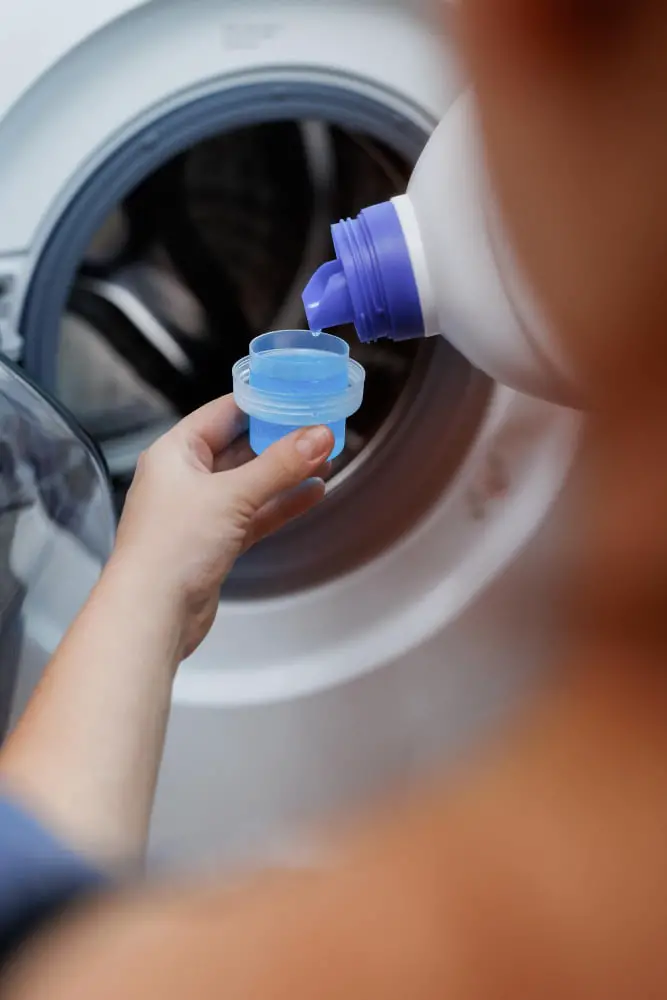
Delicate or hand wash settings are ideal for washing yarn blankets, as they are less harsh on the fibers. Always use cold water, which helps protect the colors and texture of your yarn.
A gentle cycle reduces agitation, limiting potential tangling and damage. To prevent unnecessary friction, place your blanket in a mesh laundry bag or wrapped in a white pillowcase. Avoid adding anything else to the drum, particularly items with hooks, zippers, or velcro that could catch and pull the yarn.
When adding detergent, half the amount recommended for a regular load is enough. Once the cycle is complete, refrain from using the spin dry function as it might stretch your yarn.
Proper Drying Methods for Yarn Blankets After Washing
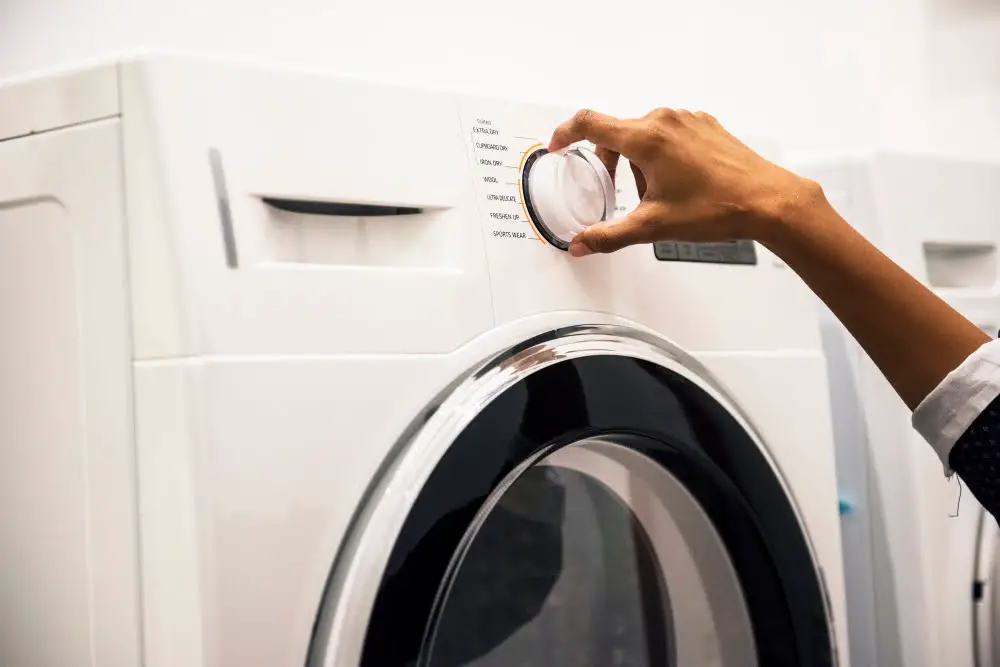
To maintain the quality of your blanket, laying it flat to dry naturally is most advisable. Avoid direct sunlight, as this can cause colors to fade and yarn to shrink. Spread the blanket on a clean, dry towel, gently reshaping it to its original dimensions.
If you need to speed up the drying process, rolling the blanket in a dry towel can help absorb excess moisture. Refrain from wringing or twisting the blanket, as this can cause the yarn to stretch, distorting the shape of your blanket.
For blankets made of synthetic yarns like acrylic, low-heat tumble drying can be considered if the yarn label allows. However, be cautious not to use high heat as it can cause the fibres to melt or deform.
Ensure the blanket is completely dry before storing or using. Dampness can lead to mildew, causing undesirable odor and compromising the quality of the yarn.
FAQ
Can a yarn blanket be washed in the washing machine?
Yes, a yarn blanket can be washed in the washing machine using a low cycle with either cold or warm water, provided that the blanket is made from washable wool or acrylic yarn.
Is it safe to put a knitted blanket in dryer?
Knitted blankets made from synthetic yarns, some cotton yarns, or linen can safely be put in a dryer on a low temperature, however, if uncertainty arises about the yarn type, air drying is recommended as a safe alternative.
How can you spot-clean a yarn blanket?
Spot-clean a yarn blanket by gently dabbing the stained area with a cloth soaked in a mixture of mild detergent and cold water, then air drying it flat.
What are some effective methods for hand-washing knit and crochet blankets?
Effective methods for hand-washing knit and crochet blankets involve soaking in lukewarm water with mild detergent, gently squeezing without twisting or wringing, and laying flat to dry.
What kind of detergent should be used when washing yarn blankets?
When washing yarn blankets, it is recommended to use a mild, preferably natural, detergent that’s free of heavy perfumes and dyes.
Related Stories
- How to Wash Yarn: Comprehensive Guide for Best Care Practices
- How to Wash Acrylic Yarn: Comprehensive Guide for Perfect Results
- How to Shrink Acrylic Yarn: Simple Steps for Perfect Results
- Does Acrylic Yarn Shrink? – A Comprehensive Guide on Acrylic Yarn Care
- How to Block Cotton Yarn: Simple Guide for a Perfect Finish
